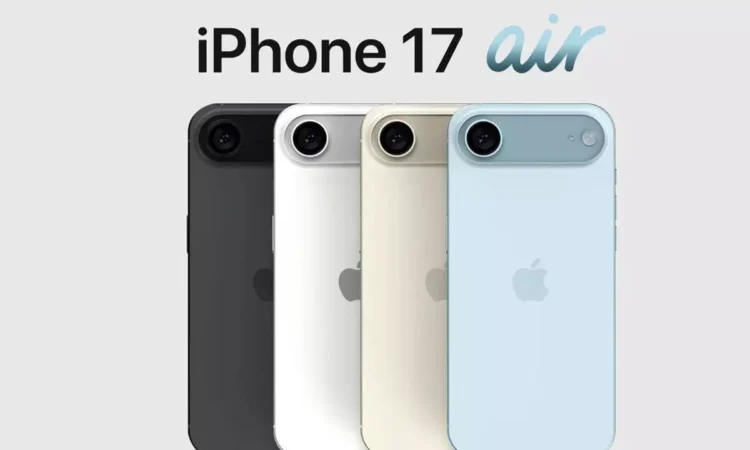Apple is preparing for its eagerly anticipated “Awe Dropping” launch event on September 9, where the iPhone 17 Air is expected to take center stage. Analysts believe this device represents one of the company’s most significant innovations since the iPhone X in 2017, marking a shift in Apple’s design philosophy. The standout feature of the iPhone 17 Air is its remarkably thin profile, measuring just 5.5mm, making it the slimmest iPhone ever produced. In comparison, the iPhone 16 was 7.8mm thick, meaning the new model is over 2mm thinner. This design advancement is reportedly the result of a reconfigured internal structure and the use of lighter materials.
Despite its sleek design, Apple has maintained durability, with the iPhone 17 Air featuring a titanium-aluminium hybrid frame that offers both strength and lightness, weighing in at only 145 grams. Additionally, the device will have a horizontal pill-shaped camera bump that accommodates a 48-megapixel wide sensor, and is likely to be available in four colors: black, white, light gold, and a new light blue option. The iPhone 17 Air will sport a 6.6-inch LTPO OLED display, which is slightly smaller than the iPhone 16 Plus’s 6.7-inch screen, aiming to strike a balance between usability and slimness.
Reports indicate that the new display will be 30% brighter than its predecessor and will support 120Hz ProMotion refresh rates, a feature that was previously exclusive to Apple’s Pro models. Under the hood, the iPhone 17 Air is anticipated to be powered by Apple’s latest A19 chipset. Some leaks suggest it may be a slightly reduced version of the A19 Pro, featuring one less GPU core, but it is still expected to deliver flagship-level performance. The device is also rumored to come with 12GB of RAM and vapor chamber cooling technology to maintain efficiency during intensive tasks.
On the rear, it will likely feature a single 48-megapixel wide-angle camera, which may limit advanced features like spatial video recording; however, Apple has improved the front camera with a 24-megapixel sensor, doubling the resolution of the iPhone 16. The slimmer design may affect battery capacity, with rumors indicating a 2,800mAh battery, similar to the iPhone 12. Nevertheless, Apple is counting on the A19 chip’s efficiency, new high-density battery technology, and the C1 modem to provide adequate runtime. The iPhone 17 Air will also support Qi 2.2 wireless charging at speeds up to 25W. Furthermore, the company is expected to introduce its proprietary Wi-Fi 7 chip alongside the C1 modem with this model.
While mmWave 5G bands may not be supported, users can anticipate reliable connectivity. Additional features include an Action Button, MagSafe charging, and the removal of the SIM tray in more regions. As for pricing, sources suggest that the iPhone 17 Air could launch in the US at $899, in line with the price of the iPhone 16 Plus. In India, it is expected to retail around ₹89,900, though tariffs and import duties could slightly increase this amount. With its ultra-slim design, enhanced display, and powerful new chipset, the iPhone 17 Air could be one of Apple’s most impactful releases in years.


